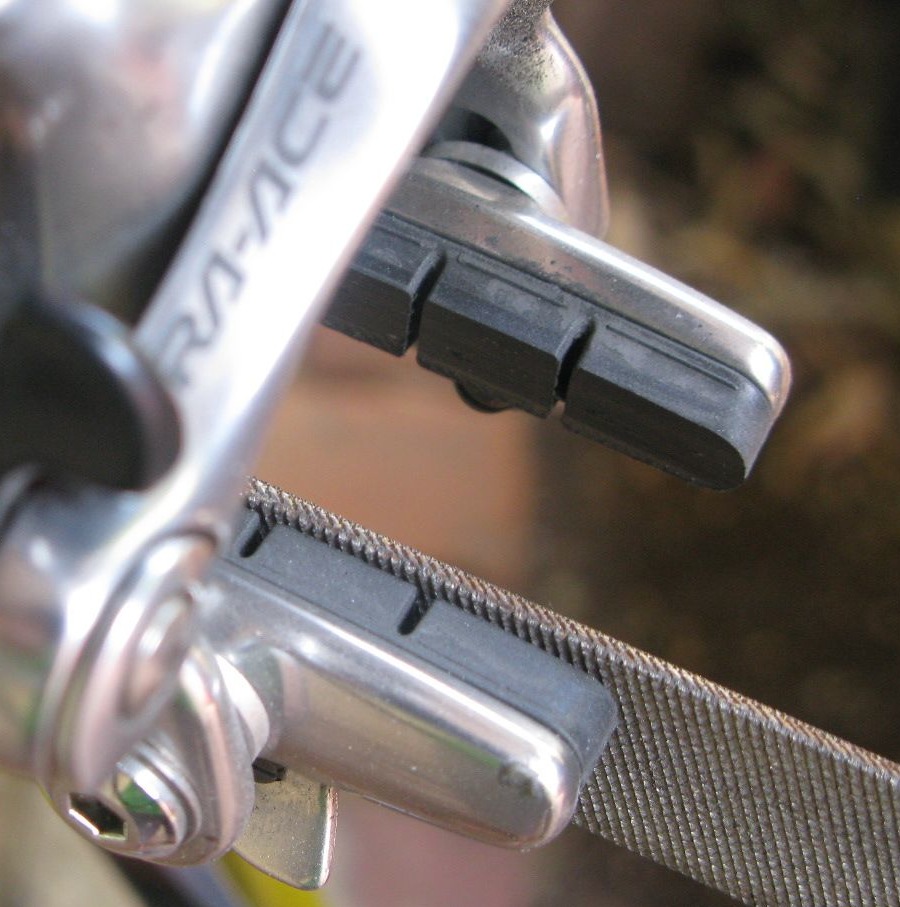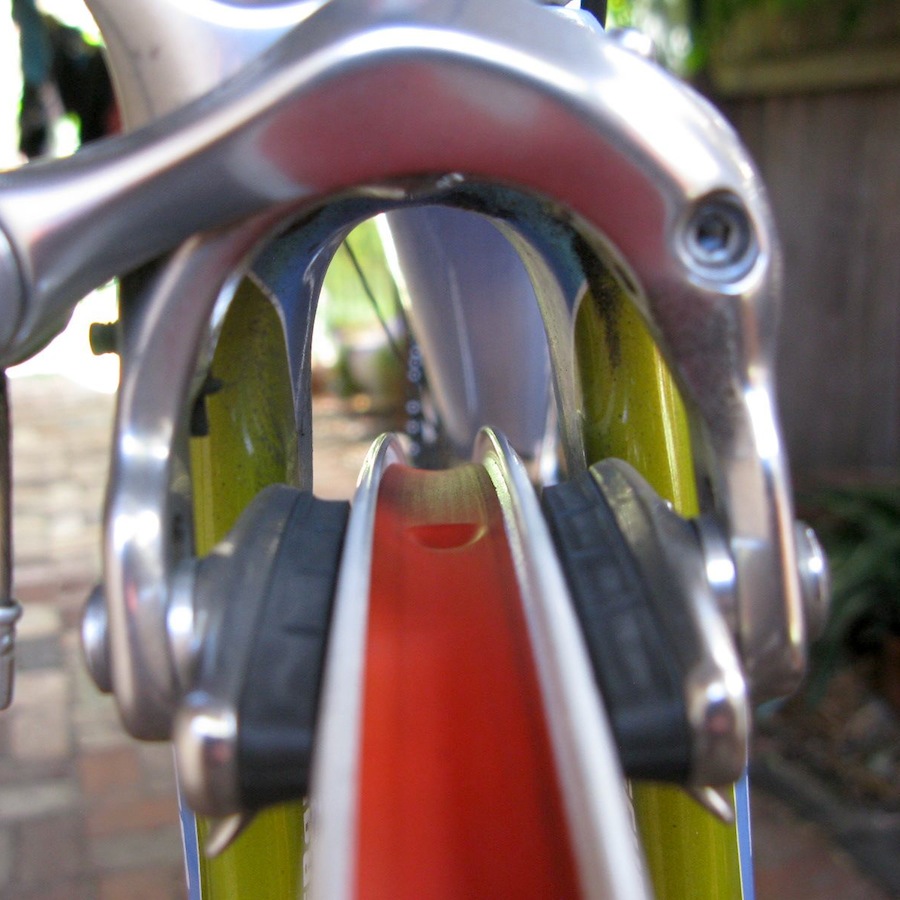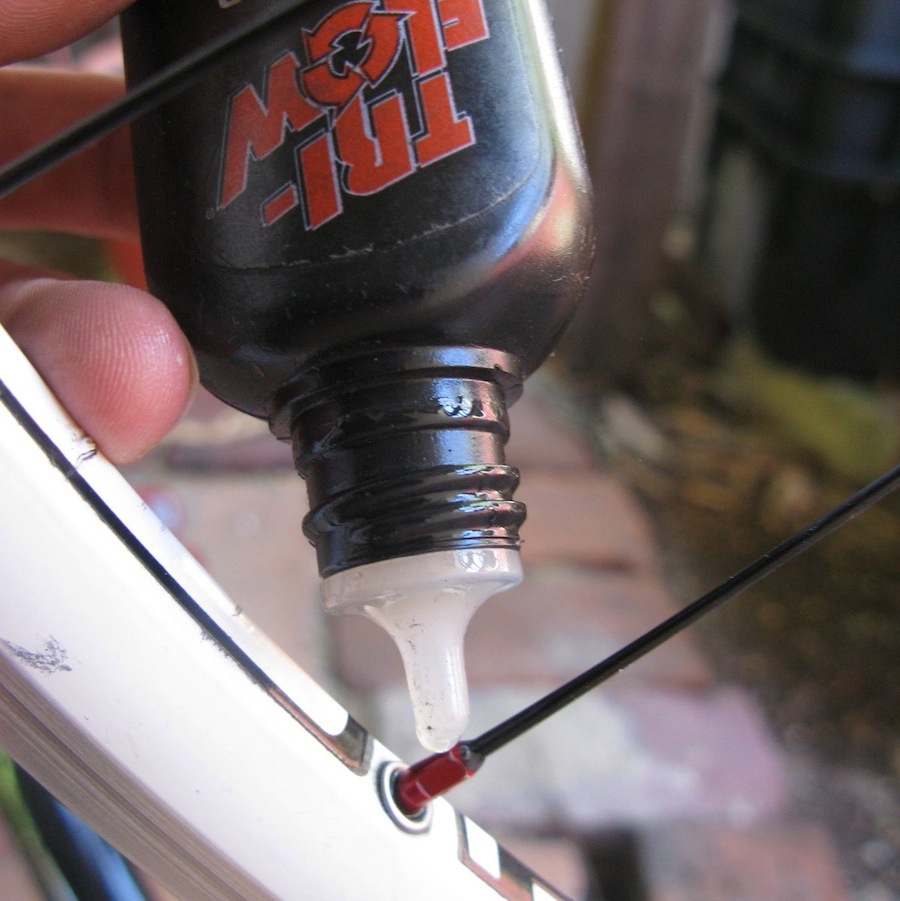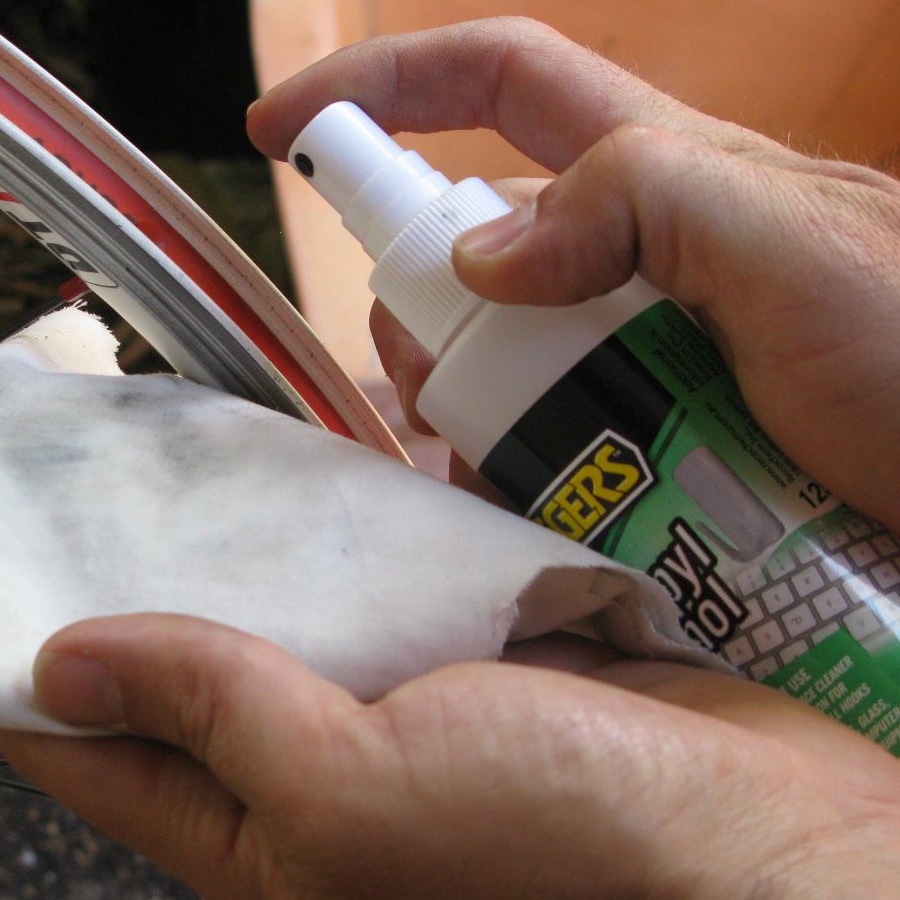Keeping your bike clean and running smoothly is always a work in progress. While most cyclists will notice when their gears are not shifting properly, wheel maintenance can be easily overlooked. Here are a couple of simple things you can do to keep your wheels in tip top condition. If you have some more suggestions, please add them to the comments section below.
- Remove glass from your tyres
Punctures are often caused by bits of glass that become embedded in the tyre and then protrude through to the tube. Dig them out before they give you trouble. I use an Engineers’ scribe from the hardware store to ‘de-glass’ my tyres, however, any sharp pointy tool will do. Its a good habit to remove glass from your tyres at least once a month (if not more often) depending on where you ride.
- Check tyres for wear and cuts
Tyres get cuts, wear out, and develop casing fatigue over time. Some tyre manufacturers have a Tread Wear Indicator (TWI) as a guide to when the rubber is getting too thin.Rotating your tyres between the front and rear wheels can help improve the life of your tyres. Look for any deep cuts through the tyre casing and sidewall that could potentially cause a blowout. There is no point in hanging onto a questionable tyre as they will only give you grief. Replace them before they reach the end of their life.
- Keep your brake pads clean
Brake pads often become embedded with road debris that will slowly wear out your rims. Use a scribe or pick to remove any embedded object that is stuck in the brake pads. You can also use a flat file or light sandpaper to help to clean the brake pads up with some fresh rubber. Brake pads can dry-out and harden over time leading to squeaky brakes that perform poorly. Push your fingernail into the brake pad to test for hardness. If there is no fingernail imprint on the pad, its probably time to get some new brake pads.
- Check that your wheels are running true
Wheels that are out of true have poor braking performance and an increased chance of spokes snapping. You don’t have to own a truing stand to check that your wheels are running true. Simply remove the tyres and visually observe the trueness of the wheel (both laterally and radially) against the brake pads. Pluck each of the spokes and listen to the sound they make. If there are any major variations in tone, get your wheels checked over as soon as possible. Spokes should sound relatively similar to each other when they are plucked on the same side of the wheel.
- Lube the nipples!
Wheels are commonly built with aluminium nipples which are prone to galvanic corrosion when threaded onto steel spokes. This is especially a problem when bikes are ridden through mucky water. Galvanic corrosion causes the nipple to fuse onto the spoke making it impossible to subsequently true the wheel. A drop of light chain oil, such as Tri-Flow, will wick down into the threads of nipple and help prevent galvanic corrosion. If you ride in the rain a lot of the time, its a good idea to do this at least once a month or whenever you clean your bike. When lubing the nipples, make sure that the tyre is removed first before you apply the chain lube then clean up any lube that may have spilled onto the rim.
- Keep your rims clean
Isopropyl alcohol and a clean rag will clean most of the gunk off your rims, spokes and hubs, and then evaporate dry. Soppy water is also fine for cleaning wheels but make sure that you dry the wheel completely after cleaning. If your rims are particularly discoloured, you can give them a scrub with a fine emery cloth to remove road grime from the braking surface. Mavic have developed a purpose made abrasive rubber block for cleaning alloy rims that will bring new life to your old hoops. On carbon rims, follow the manufacturers recommendations as to the best procedures and products for cleaning rims and brake pads.







